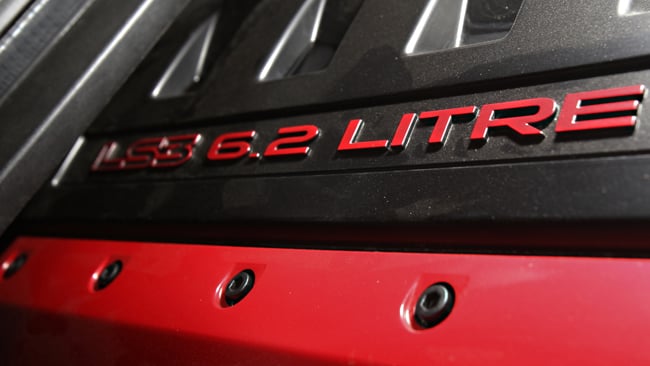HSV smacked the ball right into the back of the net when it launched the Clubsport in 1990.
Dreamed up by former Brock insider (and Bathurst winner) John Harvey, the idea of an HSV you could drive to work through the week and then hammer around a racetrack on weekends was nothing short of inspired.
Based on the then-current VN Commodore, that first 180kW 5.0-litre Clubby was a bit raw boned and stripped out, though surely that was the point. But as the years moved on the Clubsport has gained equipment and luxury as HSV tuned the concept to match up with customer demand.This brings us to the VX Clubsport R8 you see here which, by the time the Series II had rolled into showrooms in 2001, had become HSV’s biggest-selling model, and quite a resolved piece of equipment.
So how does it stack up against the latest and greatest? Can an eight-year-old Clubby still bring on the jollies in the face of HSV’s current VE-based E2 model, what with the latter’s 317kW and 20-inch wheels and tyres?There’s only one way to find out, really. On the way to meet the owner of the ‘old’ car, there’s time to sample exactly what the latest Clubsport has to offer. Plenty, in a nutshell, with 6.2 litres, a six-speed manual ’box and tons of grip at either end.Parking it next to the VX, it is instantly obvious that the new car is physically much bigger, with a higher bonnet line and deeper sides.
There’s also a lot more standard equipment, and the safety angle is covered off more completely in 2009 with head airbags and stability control joining the front and side-front bags of the older car.
In accommodation terms, there are plenty of differences but, surprisingly, it’s the VX that has the superior front pews.
There’s nothing actually wrong with the VE’s chairs, but the VX’s are a snugger fit and seem to grab you more securely. We’d choose the older car’s tiller, too, with its slightly thinner rim giving a bit more purchase.There’s no getting around the fact, however, that the VX’s interior is a bit dated, most noticeably in terms of its gauges and dashboard layout. Then again, its quality is no worse than the E2’s.Practicality comes in two forms in Clubsports, and it’s a bit of a split decision for us. On the one hand you have the VX, which misses out on even one single cup-holder, but on the other, the VE’s too-fat A-pillar makes forward vision in traffic less than ideal. Trust us, that super-sized pillar can hide even a big motorcycle.
You’d be worried if there wasn’t a huge difference in the way these cars drive, but the differences that exist are pretty easy to identify. Progress has been made in some areas but, strangely, not in some others. We’d put the gearshift into that latter category because the VE’s shift is really of no greater quality than the VX’s.Both six-speeders are heavy and slow and only the high take-up point on the VX’s clutch (probably due to a bit of general wear) makes the early car any harder to launch. That said, there is a lot more noise from the gearshift in the VX and loads more driveline shunt at low speeds in low gears. Again, though, give the VE a few years and the same number of kays on board and it might be a more even match.
HSV VY Clubsport thrashed by Mark Skaife What the VE won’t lose over the years, though, is a much more communicative front end. There’s a fundamental difference in the way each car corners, too. While the VX tends to use its outside front tyre pretty heavily, there seems to be better weight transfer in the VE to the point where it can squat a bit in the rear and take some load off the front axle when exiting a corner.The other defining difference is under the bonnet where the extra half a litre of displacement really shows up. It has taken until now to achieve it, but the E2 Clubsport has a sixth gear that is actually useable in the real world of headwinds and hills.And where the later car is cracking on in top gear, the VX needs a shift back to fifth to produce anything like the same degree of flexibility.
Surprisingly, though, when the VX is wound up beyond about 4000rpm, there’s not as much difference in thrust as you might imagine. Some of that is down to the VX’s lower kerb mass (1706kg v 1809kg) but, equally, there’s no denying every one of the VX’s 255kW are ready for the call.
So where does that leave us? Sure, the new car has a better front end, better accommodation and more real-world performance, but the old ’un is hardly slow and will still float your boat if you like this formula of car.In most regards you can see development, although whether it’s a full decade’s worth is debatable. And in other regards (particularly seeing out of), the older car actually lands a few punches. Plus, in that dark green, I reckon the cleaner, less-fussy early car is actually the looker of the two.





